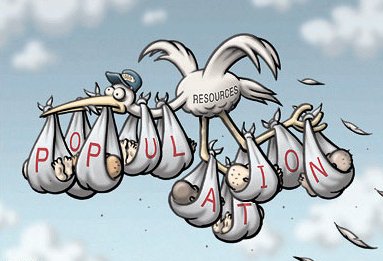O
n this page you will find a fairly common process that is used to analyze political cartoons. After you have pasted or taped your cartoon into your course notebook, list the acronym SCAMS (see below) vertically and complete the instructions below. Also, from time-to-time, read over the "Persuasive Techniques" for help completing your SCAMS.

Cartoonists’ Persuasive Techniques
Symbolism
Cartoonists use simple objects, or symbols, to stand for larger concepts or ideas. After you identify the symbols in a cartoon, think about what the cartoonist means each symbol to stand for.
[The stork is culturally-coherent in the Western world as a symbol of a baby coming soon.]
Exaggeration
Cartoonists overdo, or exaggerate, the physical characteristics of people or things in order to make a point. (Facial characteristics and clothing are commonly exaggerated.)
[Would ONE big baby have been enough, or is it better with ten?]
Labeling
Cartoonists label objects or people to make it clear exactly what they stand for. Look for labels (name tags, signs posted on objects, placards, and so on) that appear in a cartoon, and ask yourself why the cartoonist chose to label that particular person or object. Does the label make the meaning of the object more clear?
[What's written on the stork, the baby blankets?]
Analogy
An analogy is a comparison between two unlike things. By comparing a complex issue or situation with a more familiar one, cartoonists can help their readers see it in a different light. After you’ve studied a cartoon for a while, try to decide what the cartoon’s main analogy is. What two situations does the cartoon compare? Once you understand the main analogy, decide if this comparison makes the cartoonist’s point more clear to you.
[Maybe the analogy is that a single family's decisions affect the whole world?]
Irony
Irony is the difference between the ways things are and the way things should be, or the way things are expected to be. Cartoonists often use irony to express their opinion on an issue. When you look at a cartoon, see if you can find any irony in the situation the cartoon depicts. If you can, think about what point the irony might be intended to emphasize. Does the irony help the cartoonist express his or her opinion more effectively?
[Maybe its ironic that people celebrate the birth a new child, but those births, if over two per woman means population growth and further strain on the Earth's life support systems (resources).]
SCAMS!
S = Subject (should be from the APHG Topic Outline)
C = Caption or label
A = Actions (what's happening in the cartoon)
M = Message (write in words what the cartoonist is saying)
S = Symbols (describe what the symbols mean)
